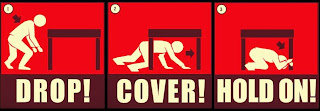This week we are exploring earthquakes and what countries do to prevent/mitigate the hazard. If I want to know something about earthquakes in a place, the first websites I go to are: the USGS Real Time Earthquakes Website or the IRIS monitoring website.
Saturday, August 29, 2020
Week 3: Earthquakes
Friday, August 21, 2020
Week 2: Tectonics
This week 2 we are exploring plate tectonics and how important it is to know the location of the plate boundaries, and how it is closely related to some natural hazards, like volcanoes or earthquakes.
Saturday, August 8, 2020
Welcome to Fall 2020, Geol9!
Hello Geol9,
Welcome to class.
If the first two months of the season was a sign of things to come, it's going to be a long hurricane season. With the climatological peak still over a month away, the chances of an above-average number of storms is increasingly likely.
In fact, forecasters at NOAA recently updated their predictions for the season. They are now suggesting that 2020 will be one of the busiest hurricane seasons on record!
In this first post of the semester, Geol9 students will discuss the differences between catastrophes, diasasters, and natural hazards. They'll also post briefly about someone (a scientist) who they identify with.
My chosen geologist is Marie Tharp, who made great contributions to seafloor mapping and is a great inspiration to women in science! (Soundings is a good book about her life)
Stay tuned for those natural hazards...


